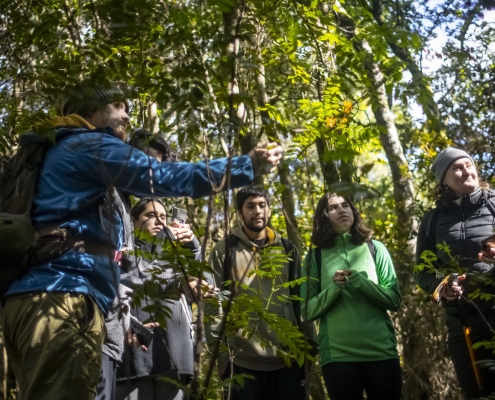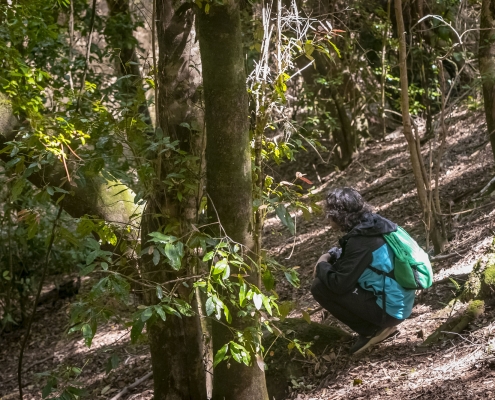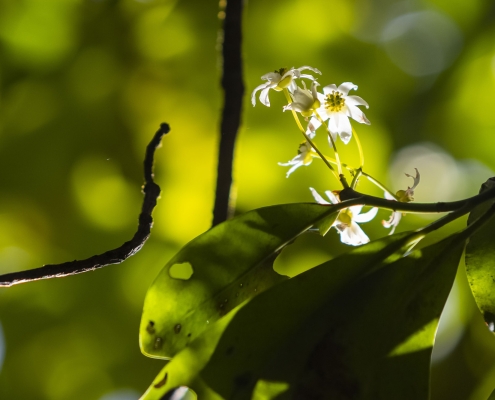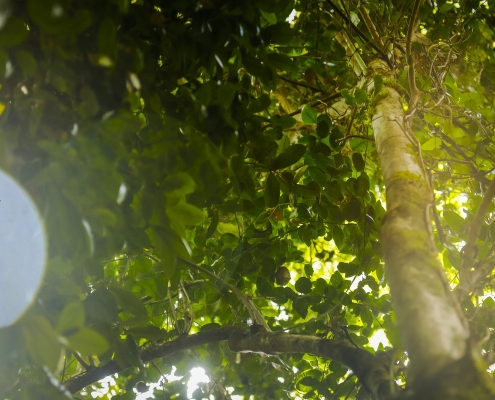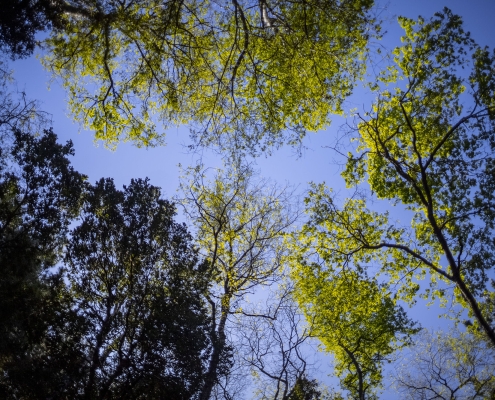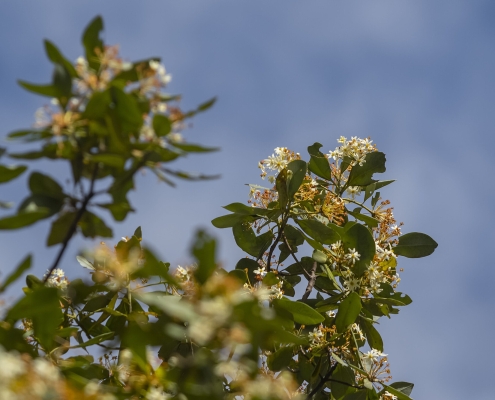Spring Colors at Campus Naturaleza
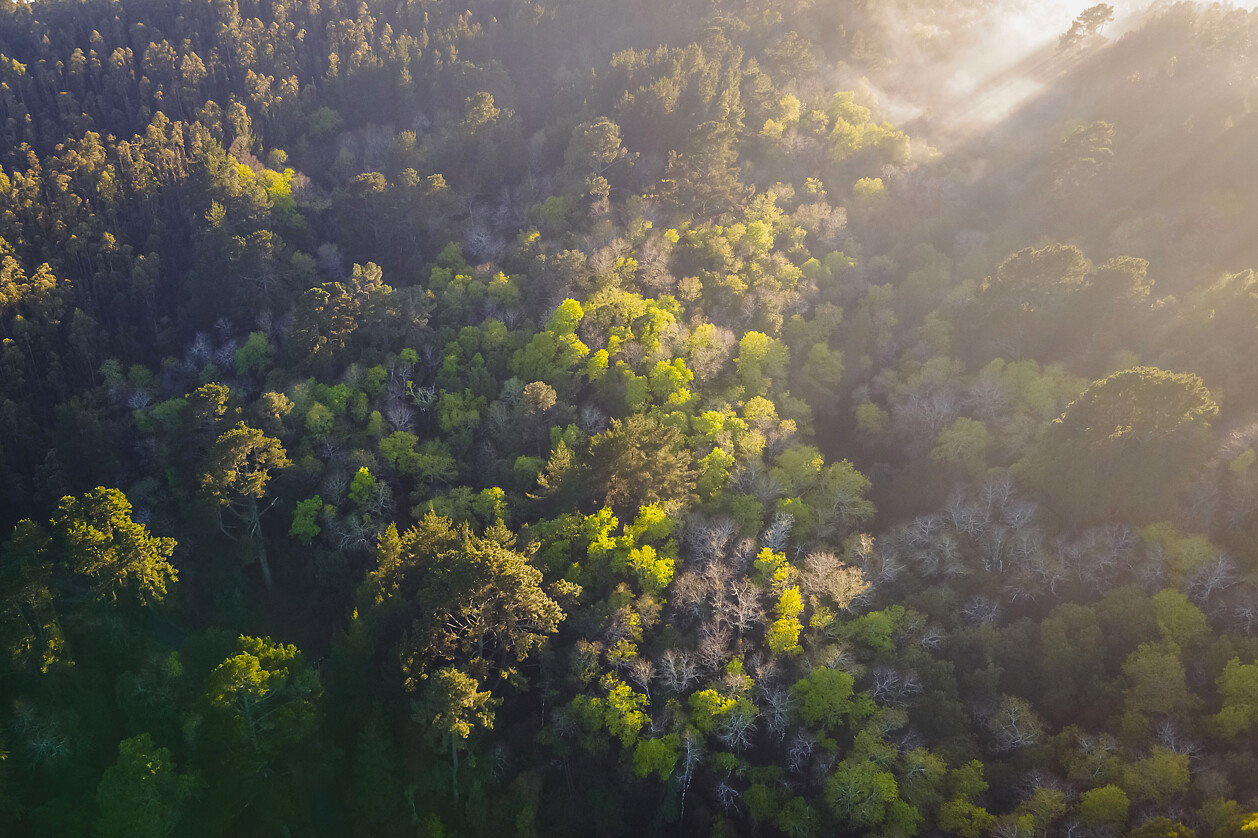
This time of year, characterized by its renewed hues and forms, is easily appreciable in the native forest and the areas where this unprecedented project in Chile will be implemented.
The song of the fiofío, a long-distance migratory bird, was heard for the first time on September 30. Throughout that month, Dr. Cristóbal Pizarro P., deputy director of the Campus Naturaleza Universidad de Concepción project, was on the lookout for the arrival of this bird, which travels between southern Brazil and Cape Horn. "It is not an easy species to see, but it is easy to hear. The peculiarity of this small bird is that it is one of the few long-distance migratory forest species we have in Chile. It is an insectivorous bird, but in south-central Chile, where it nests, it also feeds on the fruits of the canelo tree. Therefore, it is very closely associated with its flowering and has a very ancient evolutionary relationship with this tree species."
The UdeC academic highlights the intrinsic relationship between this and other animal species and the native forest present on the grounds where the Campus Naturaleza project will be implemented. This is a pioneering initiative in Chile, where the last remnants of native coastal forest, which survive in the hills and ravines surrounding the Heritage Campus of the university, will be protected. Additionally, through the project, conservation areas for threatened tree species of Chile will be implemented, ecological restoration surfaces will be established, and the benefits of permanent contact with the natural environment will be promoted.
Natural Reactivation
Dr. Cristian Echeverría L., Director of the Campus Naturaleza Universidad de Concepción project, indicates that there are subjective aspects of how people value this time of year, but it nevertheless "reminds us how alive and organized nature is, through a new cycle of life, in which birds and wildlife, in general, become active again. For example, the oak trees present at Campus Naturaleza, which lost their leaves in autumn, now in spring form their leaves again with intense tones and unique beauty."

He adds that the pitao, an endangered species, forms flowers that very few people know, adorned with glossy leaves with a lemon scent; the Araucanian michay, another threatened and endemic species of the Biobío coast, also present at Campus Naturaleza, already forms its intensely colored flowers that will later give way to small fruits, edible and desirable by pudúes and other animals. On the other hand, the corcolén, a native species with beautiful yellow flowers, envelops the spaces with its soft vanilla-chocolate fragrance.
He emphasizes that it largely depends on us that nature continues its cycles without interruption. "Biodiversity is hierarchically organized into genes, species, ecosystems, and landscapes. Therefore, when unique and specific species and ecosystems are found, they immediately have high conservation value. This is a legacy, it is the last remaining for future generations to also contemplate the unique beauty that characterizes the local biodiversity, guarded by the Campus Naturaleza project."
Similarly, Ingrid Junge, a neighbor of the area and part of one of the latest guided tours, commented that she finds it incredible that a place of these characteristics is so close to the city. "That's what I find most incredible, that it's right next to it. I live here next to the University of Concepción. So, it's almost magical that this forest is here, almost in the city itself. I find it wonderful, especially considering the time of year, spring, the blooming trees, all of that invites people to come out to these spaces," she says.
The Campus Naturaleza Universidad de Concepción project will cover an area of approximately 180 hectares, which are owned by the university. In these grounds and in successive stages, the project will focus on biodiversity conservation, ecological restoration, and areas of human well-being and mental health, among other related objectives. Currently, the spaces where the project will be implemented have restricted access, with guided tours being the only way to access and learn about the native forest.

